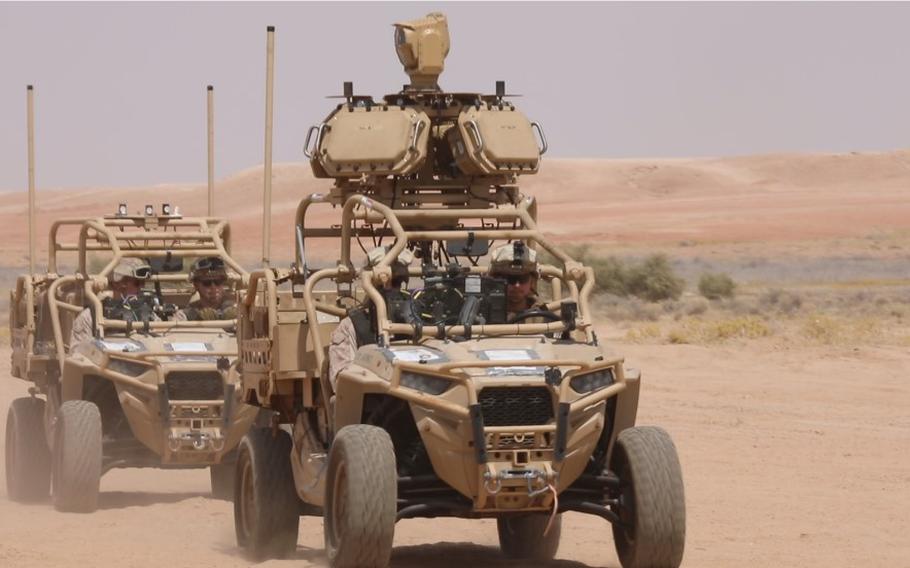
In this undated photo, U.S. soldiers practice counter-drone operations during exercise Red Sands at the Shamal-2 range in Saudi Arabia. About 300 troops apiece from the U.S. and Saudi militaries participated in the exercise, which ended Sept. 12, 2023. (U.S. Army Central/Facebook)
U.S. and Saudi forces took turns shooting down aerial drones “from dawn to dusk” as part of a joint exercise in the Middle East during the past week.
The drills at the northern Shamal-2 Range in Saudi Arabia were the largest counter-drone exercise in the U.S. Central Command area to date, Col. Robert McVey, director of the Red Sands Integrated Experimentation Center, told Stars and Stripes on Thursday.
About 300 U.S. and 300 Saudi troops took part in the drills from Sept. 8 through Tuesday. Nine systems were tested this month. Among them were Stinger missiles, with teams from the Army and Marines firing at drones.
“It’s not often that the soldiers get their opportunity to live-fire that weapon system,” McVey said.
U.S. military leaders have highlighted the impact that aerial drones have had in conflicts in Ukraine and the Middle East.
The exercise reviewed better defenses against drones, Gen. Michael “Erik” Kurilla, commander of CENTCOM, said in a statement Thursday.

In this undated photo, U.S. soldiers fire a counter-drone system during exercise Red Sands at the Shamal-2 range in Saudi Arabia. Teams tested nine weapons systems to destroy or disable unmanned aircraft. The exercise started Sept. 8, 2023, and ran through Tuesday. (U.S. Army Central/Facebook)
“The UAS threat is real, and the Red Sands Integrated Experimentation Center represents a significant step, not only in defeating (unmanned aerial) threats, but in demonstrating a shared commitment to regional security by both Saudi and U.S. forces,” Kurilla said.
Smaller suicide drones like those provided by Iran to its proxy groups in Yemen, Iraq and Syria have made an outsized impact in those conflicts, with one such attack occurring in Saudi Arabia in 2019.
The U.S. and Saudi Arabia began plans to open a testing site for anti-drone and anti-missile technology in 2022, and the site hosted its first exercise in March.
This month’s exercise involved more anti-drone systems, more targets to shoot down and more complexity, McVey said.
In one scenario, a Saudi F-15 Eagle fighter jet worked with a U.S. Army AH-64 Apache helicopter to shoot down a drone in air-to-air combat.
In another, troops defended against a drone swarm, a tactic that has been used against U.S. bases in Syria in the past.
Task Force 39, the Army’s tech team, showed off CARPE Dronvm, a phone app intended to function as a live alert system when drones are sighted.
The task force also showcased its semi-autonomous driverless trucks, which ferried ammunition between ground-based counter-drone systems.
The Army hopes to hold spring and fall live-fire counter-drone exercises in Saudi Arabia annually, McVey said.
“The exciting thing is that we’re getting at identifying and being able to respond in real time to the rapidly evolving mobile (drone) threat,” McVey said.